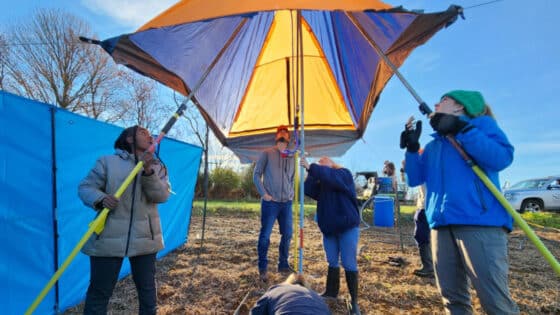Oviedo-Vargas D., D. Dierick, D.P. Genereux, and S.F. Oberbauer. 2016. Biogeochemistry 130(1–2):69–83.
doi: 10.1007/s10533-016-0243-3
Abstract
Carbon emissions from fluvial systems are a key component of local and regional carbon cycles. We used floating chambers to investigate the CO2 flux from stream water to air ( fCO2) in the Arboleda, a stream in the lowland rainforest of Costa Rica, fed partly by old regional groundwater high in dissolved inorganic carbon (DIC). Drifting and static chambers showed fCO2 averaging 35.5 and 72.7 μmol C m−2 s−1, respectively, bracketing the previously-published fCO2 value of 56 μmol C m−2 s−1 obtained using tracer methods in this stream. These values are much higher than most fCO2 data in the literature and reflect a large flux of deep crustal (non-biogenic) CO2 out of the Arboleda, a flux that does not represent a component of ecosystem respiration. Static chambers appeared to overestimate fCO2 by creating artificial turbulence, while drifting chambers may have underestimated fCO2 by under-sampling areas of potentially high gas exchange (e.g., riffles around coarse woody debris obstructions). Both static and drifting chambers revealed high spatial heterogeneity in fCO2 at the scale of 5–30 m reaches. Some observed temporal trends were localized, e.g., among three reaches with repeated measurements through the wet and dry seasons, (1) only the reach located between the other two showed significantly lower fCO2 during the dry season, and (2) the highest and lowest fCO2 were consistently observed in the reaches farthest upstream and downstream, respectively. Streams like the Arboleda receiving significant inputs of high-DIC regional groundwater merit additional study as hotspots for C emissions from terrestrial ecosystems.


